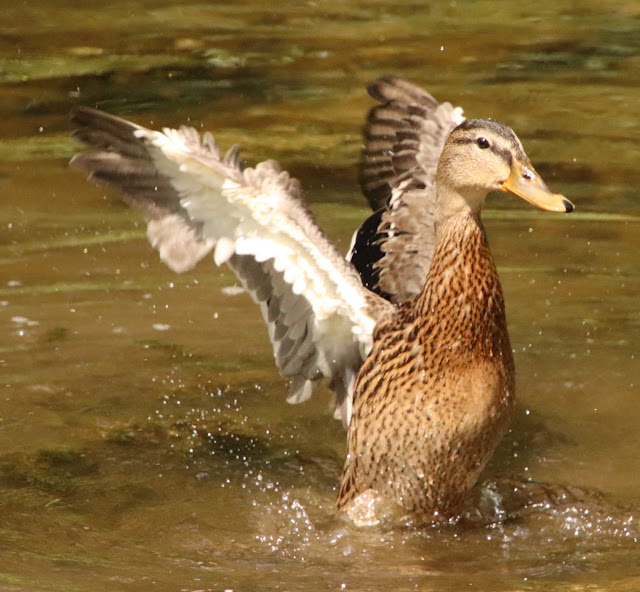 |
@Marlene A Eilers Koenig collection
|
I was recently given a lovely gift of several dozen royal photos from the 1930s to the 60s. I cannot say thank you enough for the gifter's kindness.
This photo was taken in the summer of 1937 at the Villa Savoia in Rome and shows Hereditary Princess Mafalda of Hesse (1902-1944), the wife of Hereditary Prince Philipp of Hesse (1896-1980), and their three sons: Prince Moritz (1926-2013), Prince Heinrich (1927-1999) and Prince Otto (1937-1998).
Prince Philipp was the third, but the eldest surviving son of Friedrich Karl, Landgrave of Hesse (1868-1940), and Princess Margarete of Prussia (1872-1954). His two older brothers, Princes Friedrich Wilhelm and Maximilian were killed in action in the first world war.
Princess Mafalda was the second daughter of King Vittorio Emanuele III of Italy and Princess Elena of Montenegro.
Prince Philipp was arrested on September 8 on Adolf Hitler's orders. He believed the arrest was "because of the suspicion of the cooperation of the Italian royal family with the overthrow of Mussolini." The timing was not coincidental as Mafalda was in Sofia to attend the funeral of King Boris. Her attendance at the funeral "attracted the suspicion of Nazi leaders-- and Hitler and Goebbels particular," according to Jonathan Petropolis, author of Royals and the Reich.
Three days later, Goebbels wrote in his diary: "The Führer intends to transmit to Prince Kyrill the findings of the German doctors on the poisoning of King Boris, which he believes was in all likelihood inspired by the Italian court. For it is very suspicious that Princess Mafalda, the greatest bitch in the entire Italian royal house, was on a visit to Sofia before King Boris's death."
Propaganda at its very finest, unfortunately. With Philipp incarcerated at Flossenburg, charged with homosexuality, the Nazis turned to his wife.
Petropoulos noted that Mafalda was "surprised" by Italy's capitulation. She decided to return to Rome, a difficult train journey from Sofia, traveling from there to Budapest, Vienna, Venice, and then to Rome. The SS "tracked" her all the way to Rome.
She was "broken in body and spirit" by the time she arrived in Rome. Mafalda sought refuge in the Vatican on September 21, where three of her children were already safe, thanks to Monsignor Giovanni Montini.
Mafalda did not know that her husband had been taken into custody. The day after her arrival in the Vatican, the German Embassy sent her a message that Philipp had called and "wanted to speak with her urgently." The princess had no reason to believe that this was a ruse as she and Philipp had used the secure embassy phone lines on previous occasions.
Of course, it was a fatal mistake for Mafalda to leave her sanctuary and go to the embassy where German officials told her: "Your husband called and said he will soon arrive at the airfield here in Rome and that he wanted to speak with you there." But she had no reason to not trust the German officials.
Mafalda was driven to the airport. She was escorted to a room by two SS guards. Two women were waiting for her. The Princess, who had left the Vatican without having breakfast, told the women she wanted to get something to eat. She was told: "you may not leave the room."
As she boarded the plane, she was told that Philipp would be waiting for her in Munich, but this was another lie. She was flown to Berlin and taken to the Gestapo's offices, where she was held and interrogated in harsh conditions for two weeks.
One can only imagine the emotional and physical pain that Mafalda endured during the final year of her life. She was told Philipp was dead. She "cried incessantly during the first two weeks." Officials allowed her to write letters to her family, but none were ever delivered.
Montini had no idea what happened, as well. The three children in his care left his home in late September and spent several weeks at Villa Polissena in Rome before Philipp's brother, Prince Christoph, arrived to get the children ready to travel. He took the suitcases by air, and the three children, accompanied by a SS officer, traveled by train to Kronberg, where their paternal grandmother, Margarete, the Dowager Landgrave of Hesse, was waiting to care for them.
Mafalda was taken to Buchenwald, where she was placed with other prominent prisoners, including former Austrian Chancellor Klaus von Schuschnigg. It was not until the summer of 1944 when she learned that all four of her children were safe, but she was never permitted to contact them.
The Barracks stood near an ammunition facility, which had been bombed several times by the Americans. On August 24, the factory was bombed again. As with the previous attacks, the prisoners were not taken to a bomb shelter. One of the bombs hit the barracks. Mafalda was gravely injured, as she was "up to her neck in debris." Her left arm had been "burned to the bone," according to a witness.
Mafalda and other wounded prisoners were taken to another building where they were treated. Her arm was amputated by the doctor, but the surgery did not go well as the doctor was unable to stop the bleeding. Another prisoner, who survived, was with Mafalda when she died, stating after the war, that "the princess was very collected and brave."
Princess Mafalda, Landgravine of Hesse died as the result of a loss of blood during the night of August 26 -27, 1944.
Her family did not learn about her death until after the war. Philipp was being held by the Americans when they told him that Mafalda had died in Buchenwald.
Petropoulos was on point when he wrote: "There is little doubt that Hitler himself issued the orders concerning Mafalda: the princess experienced the dictator's rage on a personal level."
Prince Philipp succeeded his father as Landgrave in 1940.
If you liked this post, perhaps you can buy me a latte
 |
The wedding of Moritz, Landgrave of Hesse, and Princess Tatiana of Sayn-Wittgenstein-Berleburg @Marlene A Eilers Koenig collection
|
































































































